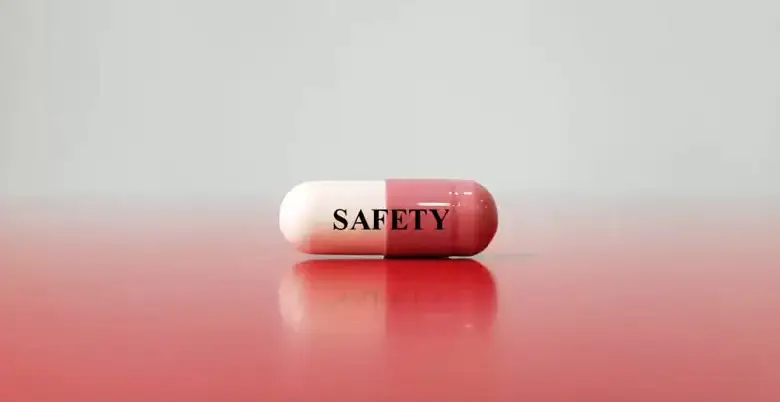Permethrin Cream The dermatological and infectious disease control communities both place high value on permethrin cream. This topical cream has acquired popularity because of its many uses, including the treatment of skin disorders and the prevention of insect-borne diseases.

This article will examine all facets of permethrin cream, including its composition, uses, medicine cost, advantages, side effects, and vital safety tips. Topical permethrin cream, a pyrethroid chemical, is an effective treatment for pests. Parasitic skin diseases, such as scabies and head lice, are common reasons for its use.
Read also about : Aptivate Syrup
In addition to its use in repelling insects, permethrin cream is also applied to the skin as a preventative step against the spread of illnesses including malaria and Lyme disease. The cream may be administered topically to the skin, where it will paralyse and ultimately kill any parasites or insects that come into touch with it.
Uses Permethrin Cream

- Scabies is a very contagious skin disorder caused by the Sarcoptes scabiei mite, and the first step in treating it is eliminating the mite.
- Scabies mite infestation causes severe itching and a visible rash. Scabies can be treated effectively with topical permethrin cream. When sprayed all over, it kills the mites and stops the infestation from spreading while relieving symptoms.
Read more : Ibugesic Plus Syrup
- Infestations of head lice are widespread, particularly in youngsters of school age. Using a lotion containing permethrin to the scalp and hair is a common method for getting rid of head lice. Comb out the dead lice and their eggs after this treatment.
- Permethrin is used on garments, bed nets, and other textiles as a repellent against mosquitoes that may be spreading malaria in areas where the disease is endemic. It lessens the likelihood that you may get the Plasmodium parasite from a mosquito bite.
- The risk of contracting Lyme disease can also be decreased by wearing clothing and equipment treated with the insecticide permethrin. Permethrin treatment of clothes and equipment can give long-lasting protection in the great outdoors.
- Permethrin cream is most commonly used to treat scabies and head lice, although it may also be recommended for the treatment of other parasitic skin illnesses.
Permethrin Cream Cost in India

- The cost of permethrin cream can vary significantly depending on various factors, including the brand, concentration, and the country in which it is purchased. In general, generic versions of permethrin cream tend to be more affordable than brand-name products.
Read also about : Tetmosol Soap
- A 30-gram tube of generic 5% permethrin cream in India would cost anywhere from INR 50 to INR 150 or even more, depending on the brand and location. Brand-name products may be priced higher.
- However, it’s important to note that drug prices can change over time due to various factors, including market dynamics and healthcare policy changes. Therefore, it is advisable to check the current prices at your local pharmacy or online retailers for the most up-to-date information.
Benefits and Side-effects of Permethrin Cream

Benefits
- Effective Treatment: Permethrin cream is highly effective in treating scabies and head lice infestations. It is considered a gold-standard treatment for these conditions.
Here you can also check the – Meftal Spas Injection for instant pain relief.
- Malaria and Lyme Disease Prevention: When used as a repellent on clothing and gear, permethrin provides long-lasting protection against mosquitoes and ticks, reducing the risk of malaria and Lyme disease.
- Minimal Systemic Absorption: Permethrin is primarily absorbed by the skin and has minimal systemic absorption, reducing the risk of adverse effects compared to oral medications.
- Easy Application: The cream is easy to apply topically, making it a convenient choice for both adults and children.
Side-effects
While permethrin cream is generally well-tolerated, some individuals may experience mild side-effects. These side-effects typically occur at the application site and may include:
Consider reading about –
- Skin Irritation: Temporary redness, itching, or a burning sensation at the application site is common. This usually subsides within a few days.
- Allergic Reactions: In rare cases, individuals may develop an allergic reaction to permethrin. Symptoms can include rash, hives, swelling, or severe itching. If you experience these symptoms, discontinue use and seek medical attention immediately.
- Tingling or Numbness: Some people may experience tingling or numbness in the area where the cream is applied. This is usually mild and temporary.
It’s essential to follow the instructions provided by your healthcare provider or the product label when using permethrin cream to minimize the risk of adverse effects. If you experience severe or persistent side-effects, consult your healthcare provider.
Composition of Permethrin Cream

- The active component in permethrin cream is the synthetic chemical permethrin, which is a kind of pyrethroid. The chrysanthemum flower is the source of the chemical pyrethroid, which has been used for decades as an effective insecticide. The active component in permethrin cream is normally found in a 5% concentration.
You may also like to read – Disodium Hydrogen Citrate Syrup
- The stability and simplicity of use of the cream are guaranteed by the addition of other substances to the mix. Skin tolerance enhancers can range from emulsifiers and preservatives to moisturisers.
- It’s worth noting that different brands and formulations of permethrin cream may have somewhat varying ingredients. If you have allergies or sensitivities, read the label for a full list of ingredients and talk to your doctor.
Substitute to Permethrin Cream
In some cases, permethrin cream may not be suitable due to allergies or other factors. In such instances, your healthcare provider may recommend alternative treatments or products.

It’s important to consult with a healthcare professional for guidance on suitable substitutes. However, here are some potential alternatives for specific uses:
Scabies Treatment
- Ivermectin: An oral medication that can be prescribed for the treatment of scabies when topical treatments like permethrin are not suitable.
Head Lice Treatment
- Malathion: A topical pediculicide that can be used to treat head lice when permethrin is ineffective or not tolerated.
Malaria and Tick Bite Prevention
- DEET-Based Insect Repellents: DEET (N,N-diethyl-meta-toluamide) is a common active ingredient in insect repellent sprays and lotions. These can be applied to the skin and clothing to repel mosquitoes and ticks.
Lyme Disease Prevention
- Permethrin-Treated Clothing: You can purchase clothing and gear that are pre-treated with permethrin to provide long-lasting protection against ticks.
Always follow your healthcare provider’s recommendations for the most appropriate treatment or preventive measures for your specific situation.
Safety Advice for Permethrin Cream

Permethrin cream should be used with caution to maximise its efficacy and reduce the possibility of side effects. Important safety reminders are as follows.
- First and foremost, always read and comply with your healthcare provider’s or the product’s labelled instructions. Take note of how long and where on the body you should apply the product.
- Permethrin cream is not meant to be ingested and should be used externally only. Keep away from mucous membranes, including the eyes, mouth, and nose. In the event of inadvertent exposure, flush the area with water.
- Third, use on dry skin that has been well cleansed before applying the permethrin cream. Use caution when applying to damaged or irritated skin.
- While treating scabies or head lice with permethrin cream, it is important to cover all infected regions, including the entire body in the case of scabies and the scalp in the case of head lice.
- Thoroughly wash hands after using permethrin lotion to avoid getting it in your eyes or on your skin.
- Do not reapply permethrin cream without first seeing your doctor, since doing so may enhance the cream’s absorption and cause unwanted side effects.
- When the necessary application time has passed (typically 8-14 hours for scabies treatment), remove the lotion by washing it off with soap and water. Clean with warm water and a light soap.
- Launder all of the infected person’s linens in hot water and dry them on high heat to eliminate any remaining mites or lice.
- Get Medical Attention Promptly if Permethrin Cream Causes Severe Itching, Redness, or Swelling or Other Symptoms of an Allergic Reaction.
- Take Precautions: Permethrin-treated clothes should be cared for and reapplied according to the manufacturer’s directions to ensure it remains effective as an insect repellent.
- Permethrin cream should only be applied to the skin if specifically instructed to do so by a doctor or chemist. Don’t give your medicine to anyone else, and keep it out of the reach of youngsters and out of the sun.
Permethrin cream is a multipurpose drug with uses ranging from the treatment of scabies and head lice to the prevention of illnesses transmitted by insects.
Despite its overall safety and efficacy, it is important to see a healthcare practitioner before using it if you have any allergies or sensitivities to ensure you utilise it properly.
If you use permethrin cream correctly you may get the advantages while limiting the hazards.